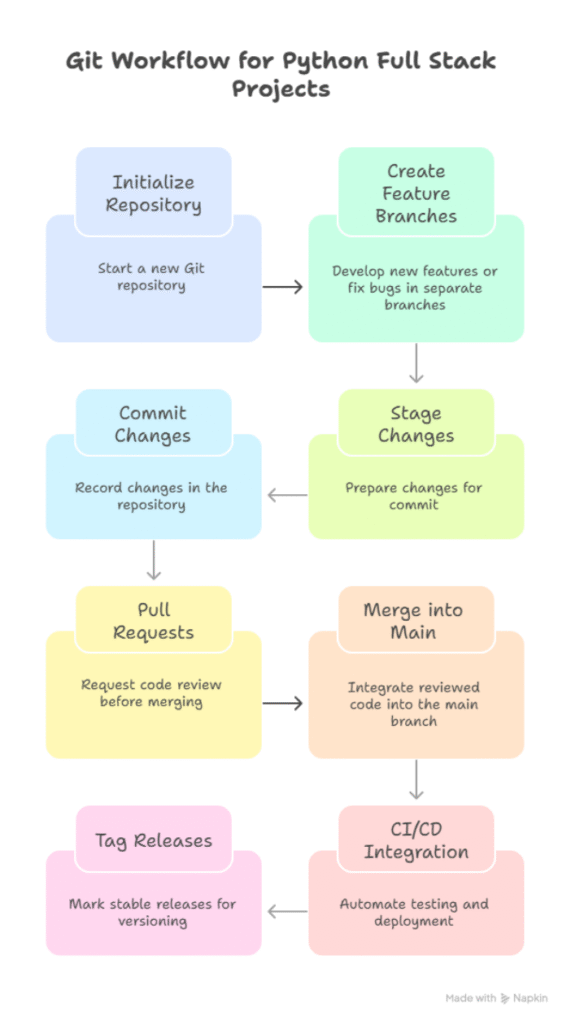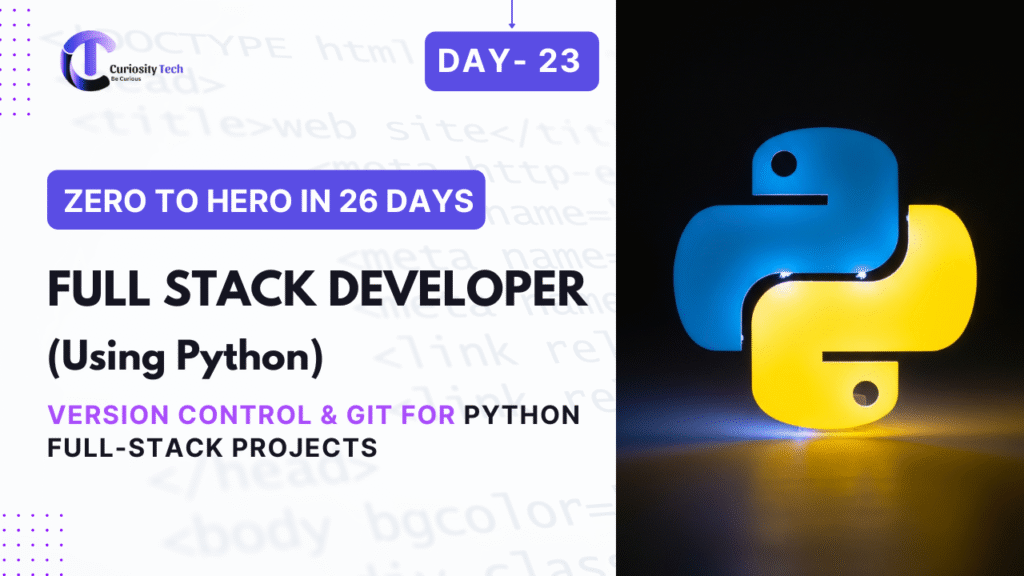Introduction
Version control is the backbone of modern software development. In Python Full Stack projects, where multiple developers collaborate on frontend, backend, and database layers, Git ensures code consistency, traceability, and collaboration.
At CuriosityTech, we emphasize that mastering Git is not just about commands—it’s about workflow management, conflict resolution, and professional-grade project organization.
Why Version Control Matters
| Benefit | Description |
| History Tracking | Track every code change and who made it |
| Collaboration | Multiple developers can work on the same codebase safely |
| Branching & Merging | Test new features without affecting main code |
| Rollback & Recovery | Revert to previous working states if something breaks |
| Integration with CI/CD | Automate tests and deployments based on Git changes |
�� Analogy: Git is like a time machine for your code, letting you explore the past, test the future, and keep everyone on the same page.
Git Basics for Python Full Stack Projects
1. Initialize a Repository
git init
- Creates a local Git repository in your project folder.
2. Stage & Commit Changes
git add .
git commit -m “Initial commit: Setup Django backend and React frontend”
- git add . stages all changes
- git commit records a snapshot of your project
3. Branching Workflow
- Use branches to separate features or bug fixes from the main code:
git checkout -b feature/user-auth
- Work on your feature and commit changes without affecting main.
4. Merging Branches
git checkout main
git merge feature/user-auth
- Combines changes from your branch into main.
Recommended Git Workflow
| Stage | Best Practice |
| Main Branch | Always stable, deployable code only |
| Feature Branches | Create branches for each new feature or bug fix |
| Pull Requests | Code review before merging into main |
| Tags & Releases | Tag stable releases for versioning |
| CI/CD Integration | Automatically run tests on commits or PRs |
�� Workflow Diagram Idea:

Git with Python Full Stack Projects
Django/Flask Backend
- .gitignore Example:
# Python
__pycache__/
*.pyc
*.pyo
*.env
# Django
db.sqlite3
/media
/staticfiles
# Flask
instance/
*.db
- Keeps sensitive files like environment variables and database files out of version control.
React/Frontend
- Add /node_modules/ and /build/ to .gitignore
node_modules/
build/
.env
GitHub / GitLab Integration
- Push to remote repository:
git remote add origin https://github.com/username/fullstack-blog.git
git push -u origin main
- Enables collaboration with team members, pull requests, and CI/CD pipelines.
Advanced Git Commands
| Command | Purpose |
| git rebase | Apply branch changes on top of another branch |
| git cherry-pick <commit> | Apply a single commit from another branch |
| git stash | Temporarily save changes without committing |
| git revert <commit> | Undo a specific commit without rewriting history |
| git log –oneline –graph | Visualize commit history in a graph |
Useful in complex Python Full Stack projects with multiple branches.
Real-World Example – CuriosityTech Training
- Students at CuriosityTech worked on a Python Full Stack e-learning platform with multiple team members:
- Frontend: React SPABackend: Django REST Framework
- Workflow:
- Each student created feature branches (feature/course-upload, feature/user-profile)
- GitHub Pull Requests for code review
- CI/CD automated tests ran on every push
- Merged into main after review
- Outcome: Students learned professional collaboration practices and avoided merge conflicts efficiently.
Best Practices
- Commit frequently with clear messages.
- Keep main branch stable and deployable.
- Use feature branches for isolated development.
- Regularly pull updates from the remote repository.
- Protect sensitive data using .gitignore.
- Integrate Git with CI/CD pipelines for automated testing and deployment.
Conclusion
Version control with Git is indispensable for Python Full Stack developers. Proper branching, collaboration, and CI/CD integration ensure projects are organized, traceable, and production-ready.
At CuriosityTech, learners apply Git in real-world Full Stack projects, mastering both technical skills and professional workflows, preparing them for collaborative development environments in 2025.



